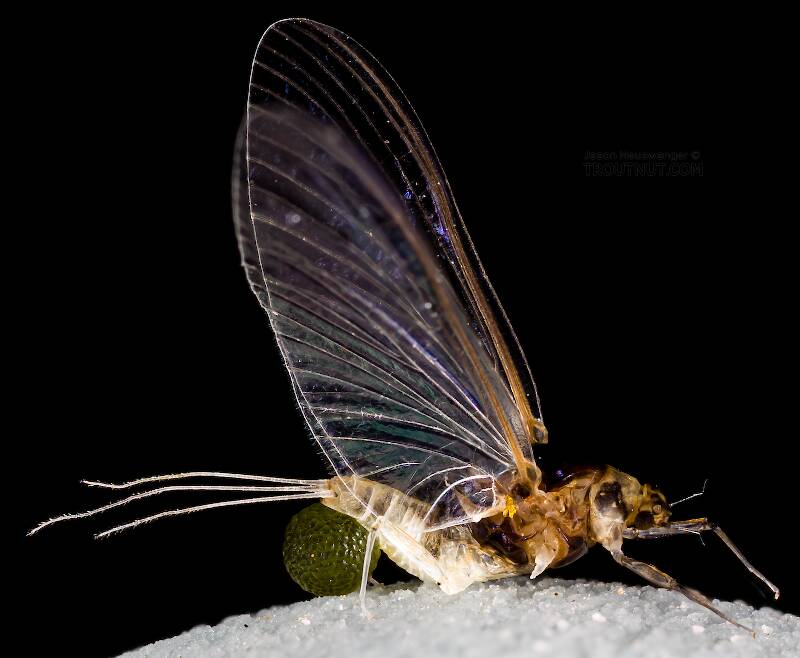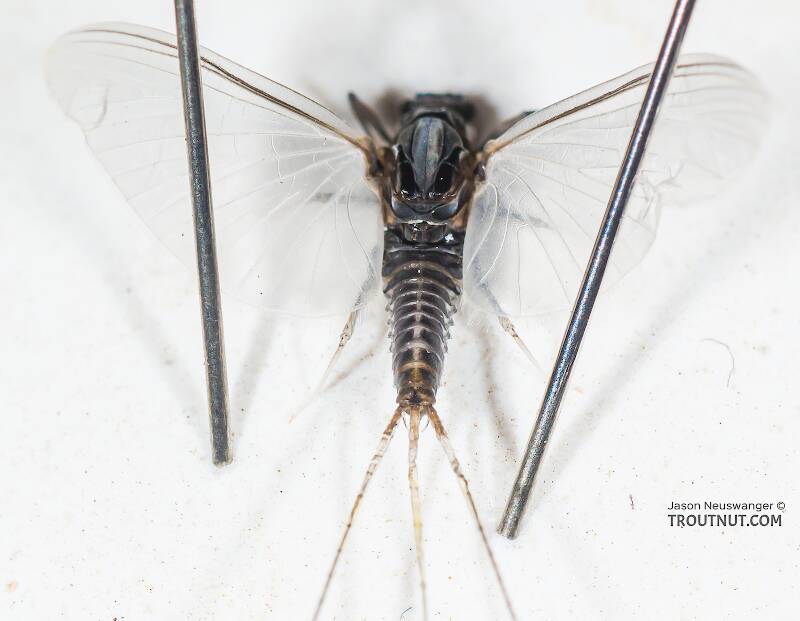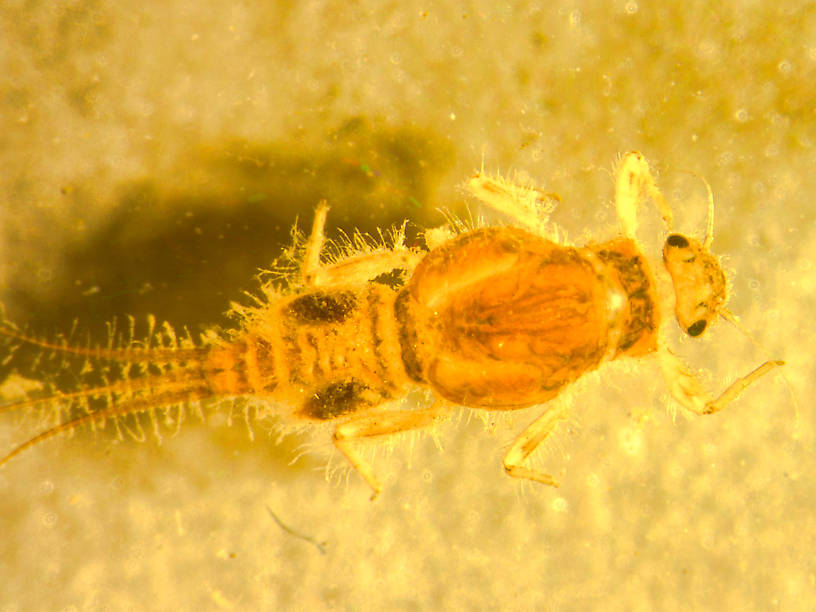
Blue-winged Olives
Baetis
Tiny Baetis mayflies are perhaps the most commonly encountered and imitated by anglers on all American trout streams due to their great abundance, widespread distribution, and trout-friendly emergence habits.
Featured on the forum

As far as I can tell, this species has only previously been reported from one site in Oregon along the Columbia gorge. However, the key characteristics are fairly unmistakable in all except for one minor detail:
— 4 small yellow spots on frons visible in photos
— Narrow occipital spinule row curves forward (but doesn’t quite meet on stem of ecdysial suture, as it's supposed to in this species)
— Short spinules on anterior margin of front legs
— Short rposterior row of blunt spinules on abdominal tergae, rather than elongated spinules dorsally
I caught several of these mature nymphs in the fishless, tiny headwaters of a creek high in the Wenatchee Mountains.
— 4 small yellow spots on frons visible in photos
— Narrow occipital spinule row curves forward (but doesn’t quite meet on stem of ecdysial suture, as it's supposed to in this species)
— Short spinules on anterior margin of front legs
— Short rposterior row of blunt spinules on abdominal tergae, rather than elongated spinules dorsally
I caught several of these mature nymphs in the fishless, tiny headwaters of a creek high in the Wenatchee Mountains.

Troutnut is a project started in 2003 by salmonid ecologist Jason "Troutnut" Neuswanger to help anglers and
fly tyers unabashedly embrace the entomological side of the sport. Learn more about Troutnut or
support the project for an enhanced experience here.
Tiny White-Winged Blacks
This common name refers to only one genus. Click its scientific name to learn more.
Mayfly Genus Tricorythodes
These are sometimes called Tiny White-Winged Blacks.
A cult following is something to which few insects can lay claim, but the tiny Tricorythodes mayflies certainly qualify. Their widespread, reliable, heavy hatches draw impressive rises of ultra-selective trout which demand the most of a technical dry-fly angler's skills.
It is surprising that such a great hatch took so long to come to the attention of fly fishermen. The Tricos were first introduced to anglers in a 1969 Outdoor Life article by Vincent Marinaro, who misidentified them as Caenis. By the early 1970s the identification had been corrected but Swisher and Richards still wrote in Selective Trout, "Few anglers are familiar with these extremely small but important mayflies." The next wave of publications boosted Tricorythodes to its current fame. I suspect their early dismissal was due in part to tackle limitations; anglers in the 1950s had no means to effectively tie and present size 22-28 flies.
It is surprising that such a great hatch took so long to come to the attention of fly fishermen. The Tricos were first introduced to anglers in a 1969 Outdoor Life article by Vincent Marinaro, who misidentified them as Caenis. By the early 1970s the identification had been corrected but Swisher and Richards still wrote in Selective Trout, "Few anglers are familiar with these extremely small but important mayflies." The next wave of publications boosted Tricorythodes to its current fame. I suspect their early dismissal was due in part to tackle limitations; anglers in the 1950s had no means to effectively tie and present size 22-28 flies.

This female Trico was collected with an associated male and many others.
See 10 more specimens...



